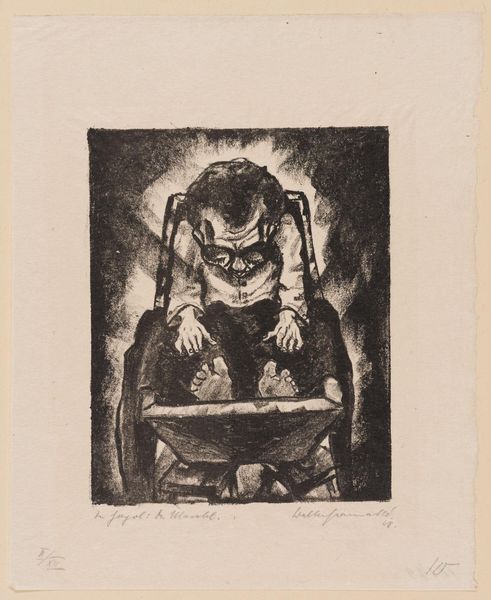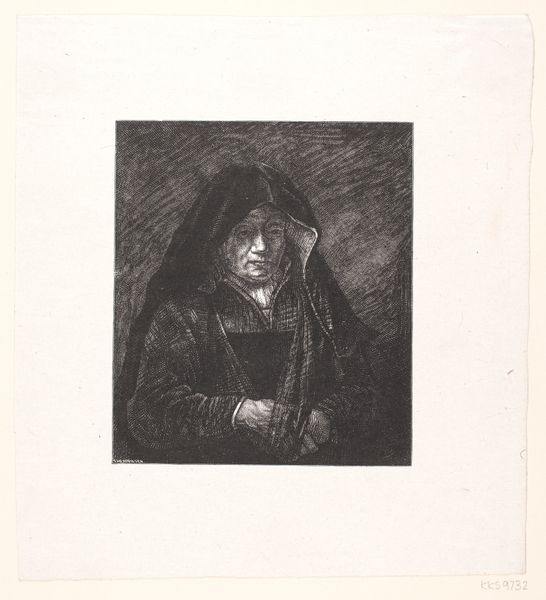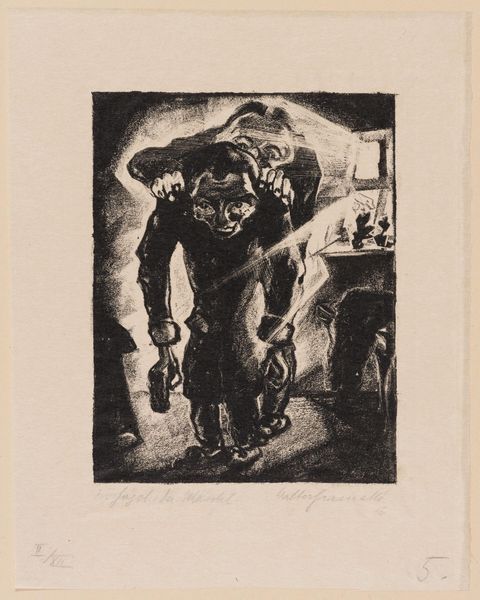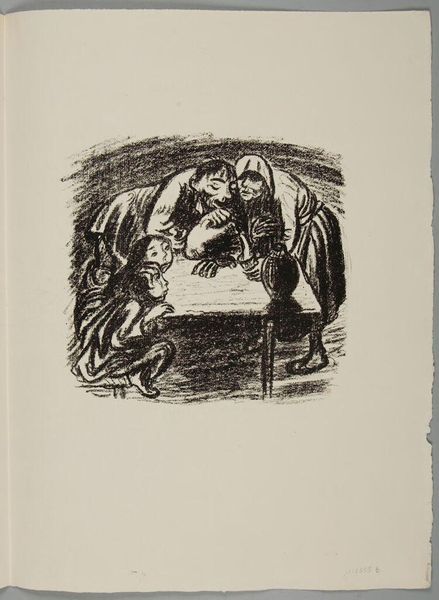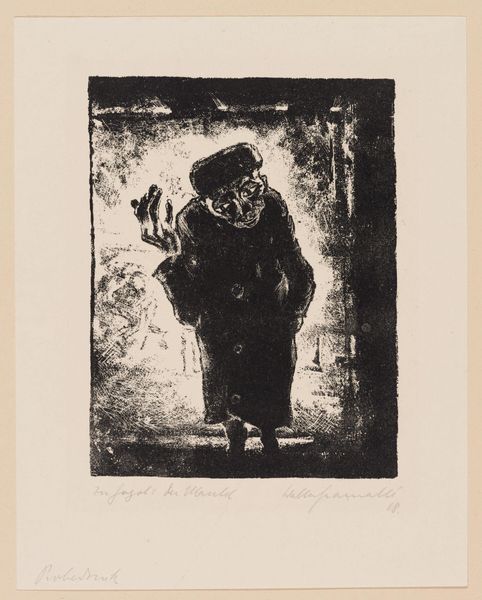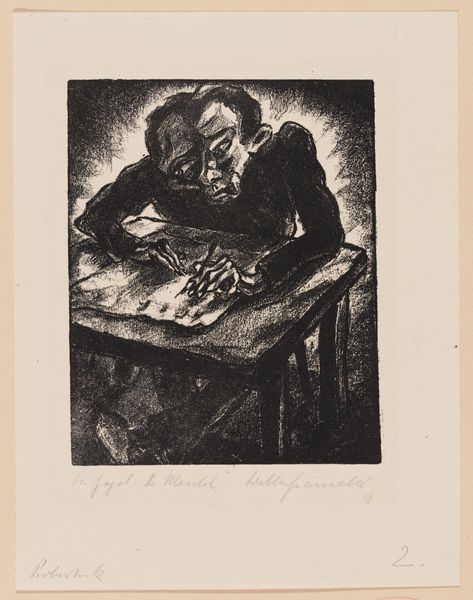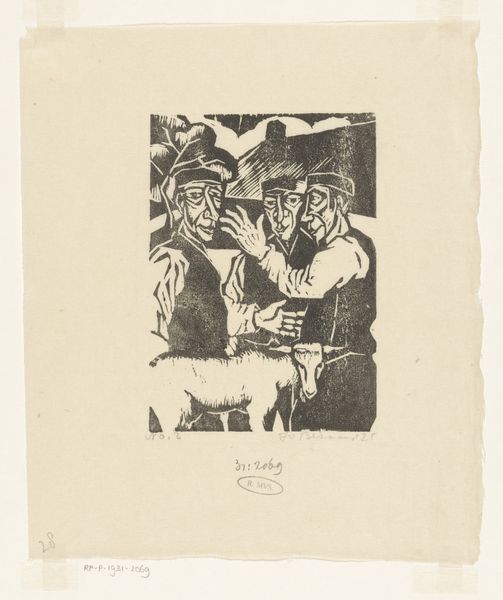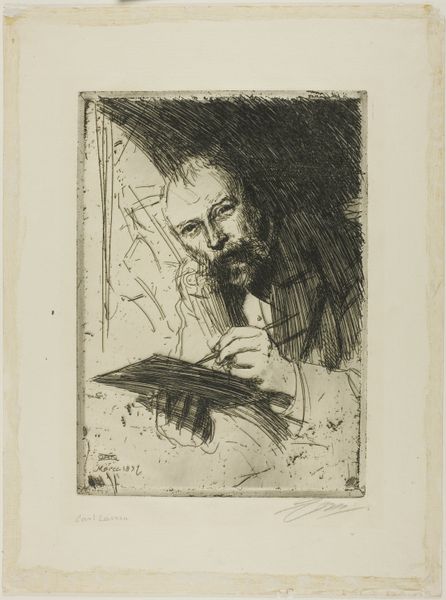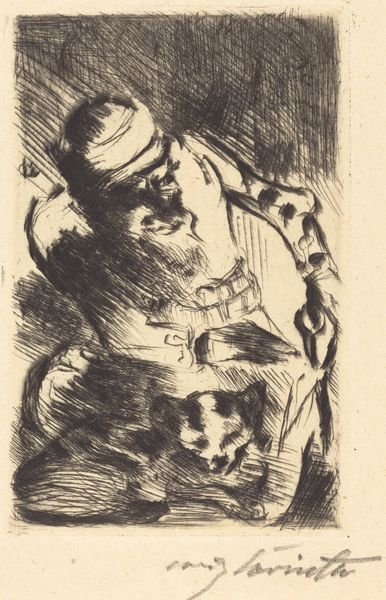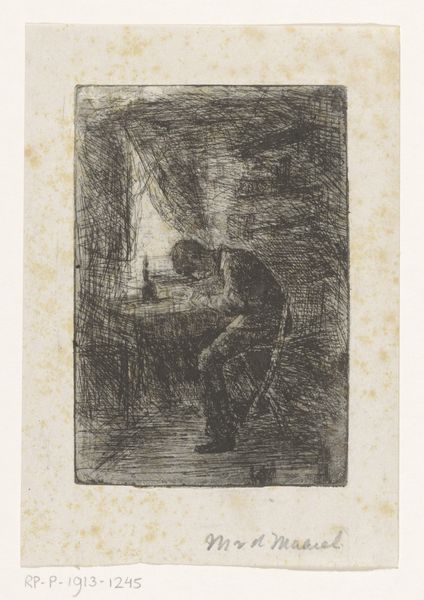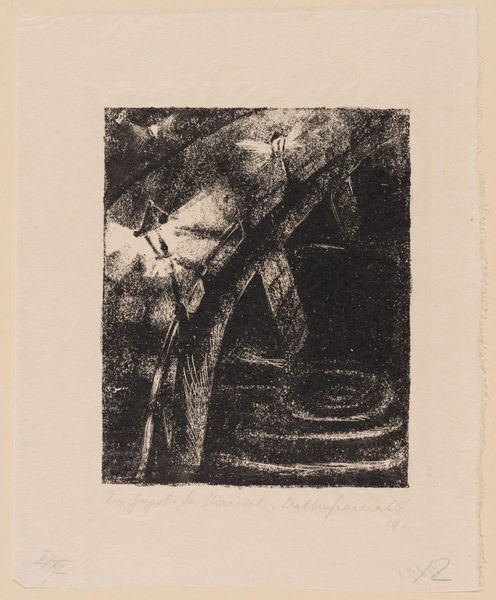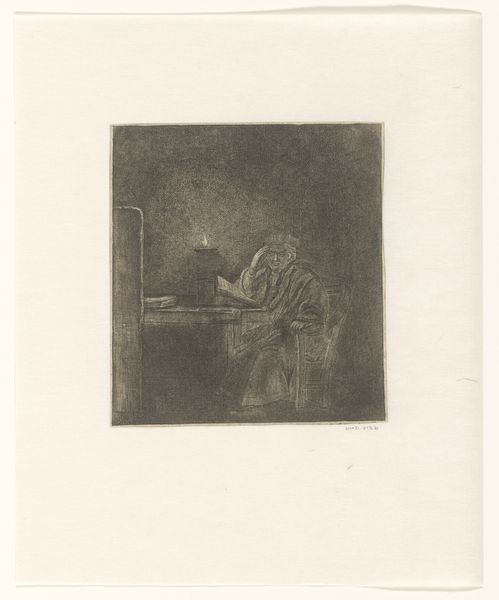
Dimensions: 16.8 Ã 13.5 cm (6 5/8 Ã 5 5/16 in.)
Copyright: CC0 1.0
Editor: Walter Gramatté's "Akaki Shows the Tailor the Areas to Be Repaired" is a poignant image, a small print with immense social weight. I'm struck by the darkness and the evident poverty. How do you interpret this work in its historical context? Curator: This print speaks volumes about social realities. Gramatté, working in an era of stark economic disparity, presents us with a scene deeply rooted in societal power dynamics. Notice how Akaki’s hunched posture and the tailor’s implied authority highlight the vulnerability of the working class. Editor: The composition seems to emphasize Akaki's dejection. Is this a common theme in art depicting poverty? Curator: Absolutely. Artists often used visual cues to elicit empathy and critique social injustices. Gramatté's work, while intimate in scale, engages with larger questions about economic exploitation and the visibility of the marginalized. Consider how museums, even today, choose to display and interpret works like these. Editor: It’s fascinating to see how a single image can encapsulate such complex social commentary. Curator: Indeed, and it prompts us to reflect on the ongoing relevance of art as a tool for social awareness and change.
Comments
No comments
Be the first to comment and join the conversation on the ultimate creative platform.
